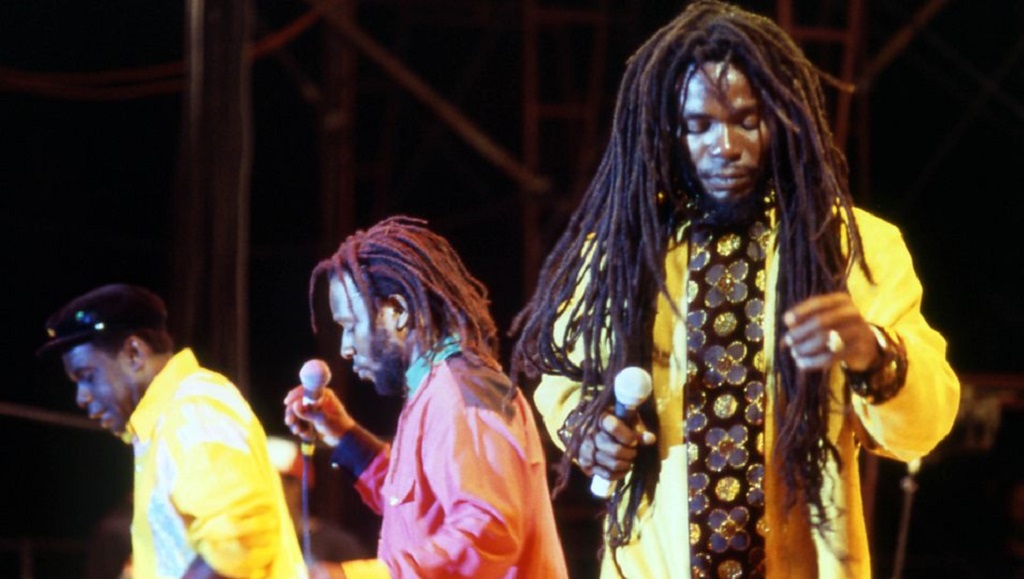Black Sabbath are generally credited as the leading pioneers of heavy metal music, and rightfully so. They took some definite cues from outfits like Led Zeppelin, Deep Purple, and Blue Cheer, but their iconic use of the musical tritone, sinister lyrical content, tuned-down guitars, and darkly blues-inflected weight announced a new, uniquely bleak and heavy sound. However, equally important to the development of the genre (perhaps most notably of its spikes-and-leather aesthetic) are Sabbath’s West Midlands contemporaries, Judas Priest. Although Priest’s arrival was not as immediately seismic as Sabbath’s (while certainly underrated, their 1974 debut Rocka Rolla is no game-changer), the band quickly developed into an innovative and essential heavy metal juggernaut before the 1970s were through (consider Sad Wings of Destiny [1976], Sin After Sin [1977] and the dual release of Stained Class and Killing Machine in 1978). Priest’s influence and power reached a peak in the early 1980s with the release of British Steel (1980) and Screaming for Vengeance (1982) (while sturdy, 1981’s Point of Entry is something of a minor detour).
Alongside Motörhead’s prolific late-seventies and early-eighties output, British Steel served as a launch-pad for the New Wave of British Heavy Metal (NWOBHM), which fully exploded with the emergence of Iron Maiden (one of Priest’s most famous and successful protégés). Two years after British Steel’s release, and at the height of NWOBHM’s cultural prevalence, Screaming for Vengeance saw the band enjoying a new surge in popularity and creative focus. Producer Tom Allom, who previously worked with the group on British Steel, Point of Entry and their 1979 live album Unleashed in the East, helps fine-tune their sound into something that is simultaneously massive and tight.
Distanced from the sprawling, technical, and progressive elements of Sad Wings of Destiny, Sin After Sin, and Stained Class, Priest excavates and crystallizes its most distinctively compelling elements into something hyper-focused on Screaming for Vengeance. Rob Halford executes his trademark hair-raising vocal range and demonstrates lyrical dexterity — from coyly sadomasochistic love ballad “Pain and Pleasure” to rebellious, AC/DC-inflected rockers like “You’ve Got Another Thing Comin’” to riffs on science fiction, fantasy, and horror imagery in “Electric Eye” and “Riding on the Wind”. K. K. Downing and Glenn Tipton elevate their ingenious guitar interplay to deliver crushing heavy metal onslaughts underscored by melodicism, and bassist Ian Hill and drummer Dave Holland provide irresistible rhythmic accompaniment.
Screaming for Vengeance ranks among heavy metal’s most sonically cohesive and infectious albums, regardless of subgenre. Forgive the absurd hyperbole, but given its distilled concentration of elements, its fierce reworking of pop sensibility, and its placement within the band’s trajectory, Screaming for Vengeance feels something like metal’s answer to Pet Sounds (1966). A comparison between The Beach Boys and Judas Priest might strike some as silly, even sacrilege, but Vengeance stands out by consolidating the catchiest moments from Killing Machine and British Steel within pummelling sonic contexts that sound so much bigger than anything on those two records. Not to mention, its simultaneous emphasis on song structure and evil heaviness has left a permanent imprint on the genre at large.
Part of Kicking the Canon – The Album Canon.







